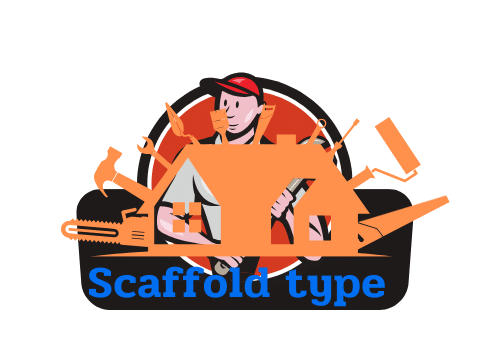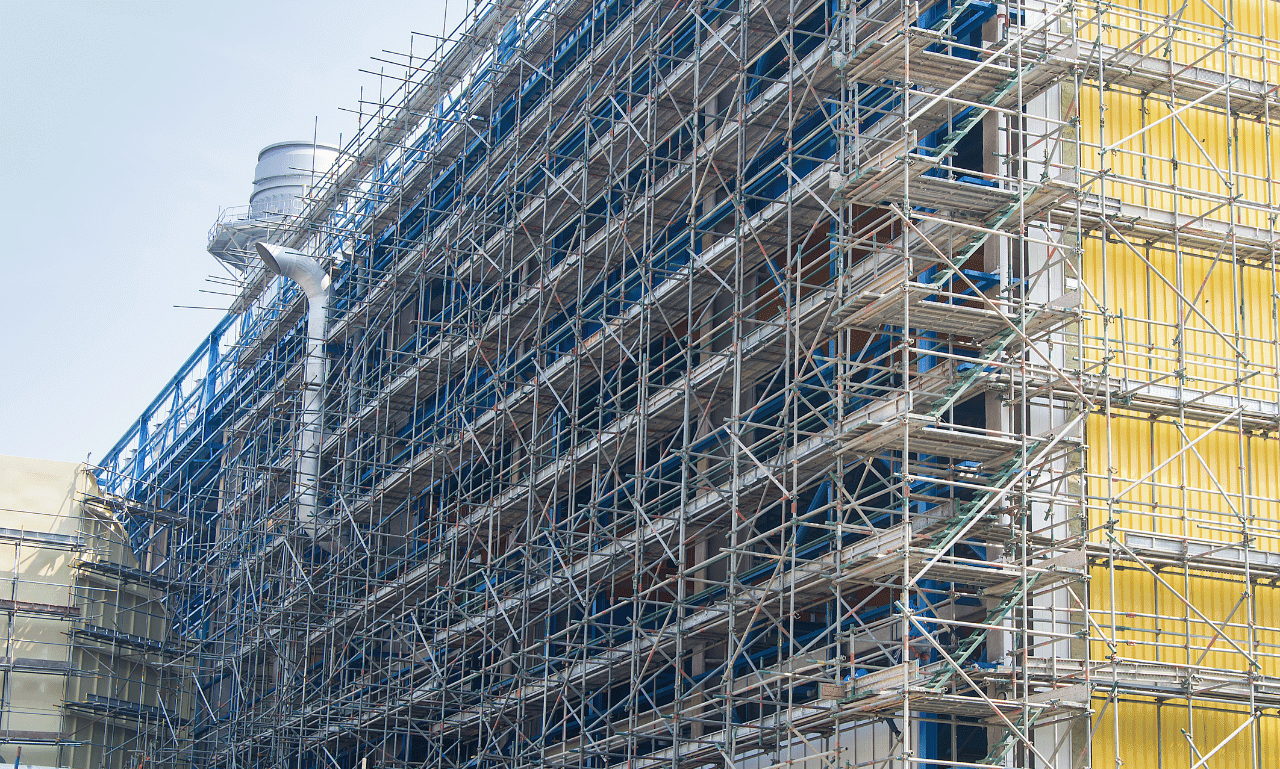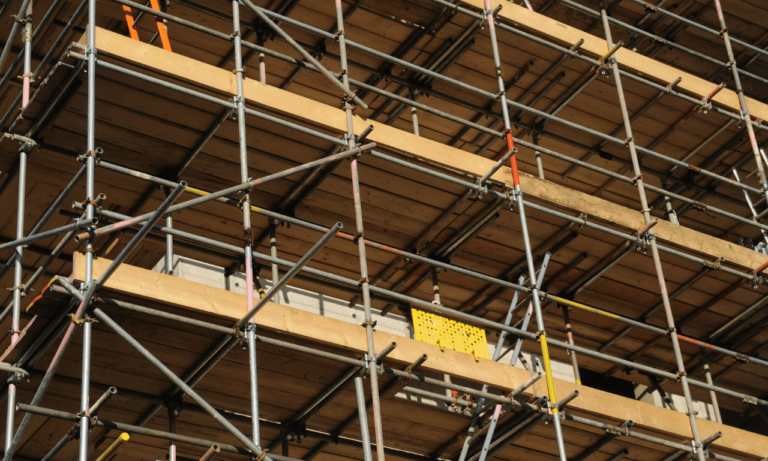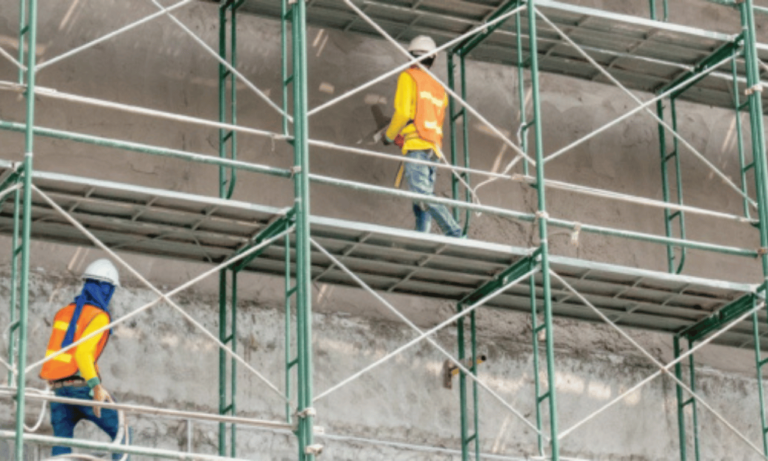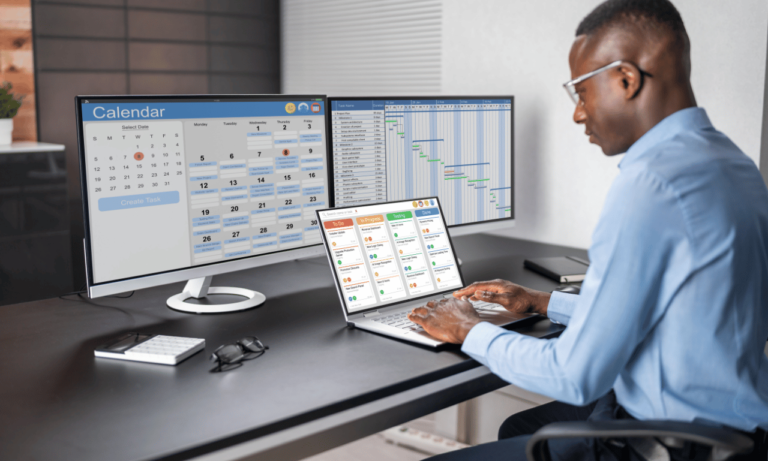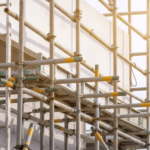Phone:
(+65)8319-0742
Augme
Scaffolding assembly on construction sites is a critical process that requires strict adherence to safety regulations. Unfortunately, accidents related to scaffolding deficiencies are common, posing a significant risk to workers’ lives and project timelines. However, the advent of augmented reality (AR) technology offers a promising solution to improve scaffolding efficiency and safety in the construction industry.
AR technology combines the real-world environment with virtual elements, providing a seamless and interactive experience. In construction, AR has been successfully utilized for visualization, project management, and training purposes. By leveraging the power of artificial intelligence and deep learning algorithms, AR can enhance the scaffolding setup process, making it more accurate, efficient, and safe.
Key Takeaways:
- Augmented Reality (AR) for Scaffolding efficiency and safety in construction projects.
- AR allows real-time visualizations and overlays of virtual elements on the scaffold structure.
- It improves accuracy in checking tie rods, cross-bracing rods, and base plates.
- AR assists in measuring inspection requirements and identifying deficiencies.
- It provides interactive and immersive training environments for scaffold setup and safety procedures.
Benefits of AR in Scaffolding
Augmented Reality (AR) technology holds numerous benefits for scaffolding operations in the construction industry. By leveraging AR, scaffolding professionals can enhance both safety and efficiency throughout the scaffolding process.
One key advantage of AR in scaffolding is the ability to provide real-time visualizations and overlays of virtual elements onto the scaffold structure. This feature allows workers to visualize the final setup and identify any potential issues or discrepancies before the physical construction begins.
AR technology improves the accuracy of scaffolding inspections by enabling workers to check the presence and alignment of critical components such as tie rods, cross-bracing rods, and base plates. It eliminates the need for manual measurements and reduces the risk of human errors in identifying deficiencies.
Furthermore, AR can assist in measuring inspection requirements, ensuring scaffolding structures meet safety standards. Through AR-enabled devices, workers can easily assess and validate whether the scaffolding configuration adheres to the necessary specifications. Any deviations or shortcomings can be promptly identified, leading to timely corrections and adjustments.
The benefits of AR in scaffolding extend beyond inspection and measurement. The technology offers a more efficient and effective way to inspect scaffolding structures, minimizing the potential for accidents and improving overall safety protocols. With AR, workers receive timely feedback and guidance, reducing the likelihood of safety hazards and ensuring compliance with industry regulations.
Overall, AR technology has the potential to revolutionize scaffolding operations by enhancing safety, accuracy, and efficiency. It empowers workers with real-time visualizations, improves inspection processes, and streamlines scaffold setup. By embracing AR, the construction industry can unlock significant advancements in scaffolding practices, ultimately leading to safer and more efficient construction projects.
Implementation of AR for Scaffolding Safety
The implementation of Augmented Reality (AR) in scaffolding safety involves integrating deep learning models and AR models. To achieve this, industry-leading devices such as Microsoft HoloLens and HoloLens2 are well-suited for AR implementation due to their spatial awareness, position tracking, and interaction capabilities.
AR technology plays a crucial role in recognizing safety violations and tracking construction progress, leading to improved safety planning and inspections. By leveraging AR solutions for scaffolding efficiency, superintendents and safety personnel can perform visual inspections in compliance with safety regulations.
One of the key benefits of AR in scaffolding safety is the ability to detect and quantify cracks on surfaces of concrete structures. This allows for early identification of potential hazards and enables prompt remedial actions. By visualizing and overlaying virtual elements on the scaffold structure, AR enhances safety inspection accuracy and minimizes human errors.
AR Solutions for Scaffolding Efficiency
In addition to safety enhancement, AR technology also contributes to the overall efficiency of scaffolding operations. AR can streamline the inspection process by providing real-time guidance and feedback, ensuring that scaffolding structures are assembled correctly and meet the required standards.
Furthermore, AR can assist in ensuring compliance with safety regulations by providing a visual representation of the necessary safety precautions for specific scaffolding setups. This helps scaffold crews to better understand safety regulations and carry out their work with a heightened level of awareness.
By integrating deep learning models, AR technology can recognize and analyze various scaffold components, including tie rods, cross-bracing rods, and base plates. This greatly improves the accuracy of inspections and reduces the potential for human error.
| Benefits of AR for Scaffolding | Implementation of AR for Scaffolding Safety |
|---|---|
| Enhanced safety in scaffolding operations | Integration of deep learning and AR models |
| Real-time visualizations and overlays | Recognizing safety violations |
| Improved accuracy in inspections | Tracking construction progress |
| Minimized human errors | Detecting and quantifying cracks |
| Efficient and effective inspections | Spatial awareness and position tracking |
By harnessing AR solutions for scaffolding efficiency, the construction industry can embrace technological advancements and achieve higher levels of safety and productivity. The implementation of AR in scaffolding safety not only improves the working conditions for construction workers but also contributes to the successful completion of projects.
AR Applications for Scaffold Design
When it comes to scaffold design, Augmented Reality (AR) offers a range of applications that can revolutionize the construction industry. By providing a virtual representation of the scaffold structure, AR enables designers to visualize and manipulate the scaffold model in real-time, enhancing the design process.
One of the key benefits of AR in scaffold design is the ability to plan and optimize the placement of scaffolding components. Designers can use AR technology to identify potential clashes and conflicts in the design before the actual construction begins. This helps in ensuring the structural integrity and safety of the scaffold.
AR integration in scaffolding projects also facilitates better communication and collaboration among stakeholders. By having a virtual representation of the scaffold design, all parties involved can have a clear understanding of the project requirements and expectations. This improves coordination and minimizes errors and misunderstandings throughout the construction process.
Furthermore, AR technology can streamline the design review process by allowing designers to present their ideas in a more interactive and immersive manner. Stakeholders can view and interact with the virtual scaffold model, providing valuable feedback and insights in real-time.
Incorporating AR applications in scaffold design not only enhances the efficiency and accuracy of the process but also promotes innovation and creativity. Designers can experiment with different design concepts and configurations, making informed decisions based on the visualized model.
By leveraging AR technology in scaffold design, the construction industry can benefit from improved visualization, communication, and collaboration, leading to more efficient and successful scaffolding projects.
| Benefits of AR in Scaffold Design | AR Integration in Scaffolding Projects |
|---|---|
|
|
**
Key Benefits of AR in Scaffold Design:
**
- Real-time visualization of scaffold structure
- Optimization of component placement
- Detection of clashes and conflicts
- Enhanced communication and collaboration
- Improved design review process
**
AR Integration in Scaffolding Projects:
**
- Clear understanding of project requirements
- Minimization of errors and misunderstandings
- Streamlined coordination among stakeholders
- Interactive and immersive design presentations
- Promotion of innovation and creativity
AR for Scaffolding Training

AR technology presents a valuable opportunity to enhance scaffolding training, providing an immersive and interactive learning experience that improves skill development and safety protocols. By integrating AR into training programs, trainees can gain hands-on experience in scaffold setup, assembly, and safety procedures in a virtual environment.
One of the key advantages of AR for scaffolding training is the ability to simulate real-world scenarios, allowing trainees to practice scaffold construction and inspection virtually. This provides a safe and controlled environment where mistakes and errors can be addressed without any real-world consequences.
AR technology also plays a crucial role in familiarizing trainees with the various components of scaffolding structures, as well as the regulations and safety protocols associated with their construction and inspection. Through interactive AR models, trainees can explore and interact with scaffold components, gaining a deeper understanding of their functions and proper usage.
AR for scaffolding training goes beyond just visualization. It offers real-time guidance and feedback to trainees, helping them improve their performance and identifying areas for improvement. Trainees can receive instant feedback on their assembly techniques, accuracy in following safety protocols, and overall proficiency in scaffold construction.
AR technology can also facilitate performance assessment, allowing trainers and supervisors to track trainees’ progress and identify areas where additional training or support may be needed. This data-driven approach to scaffolding training enables targeted interventions and personalized instruction, ultimately leading to more efficient skill development and greater workplace safety.
Benefits of AR for Scaffolding Training
The integration of AR technology in scaffolding training offers several key benefits:
- Enhanced learning experience through immersive and interactive training environments.
- Simulated real-world scenarios for practice and error correction.
- Improved familiarity with scaffolding components, regulations, and safety protocols.
- Real-time guidance and feedback for performance improvement.
- Data-driven performance assessment for targeted interventions.
By harnessing the power of AR technology, scaffolding training can be transformed into a dynamic and engaging process that equips trainees with the necessary skills and knowledge to ensure safety and efficiency in construction projects.
Scaffolding Training Performance Comparison
| Training Method | Advantages | Limitations |
|---|---|---|
| Traditional Classroom Training | – In-person instruction – Face-to-face interaction – Ability to ask questions | – Limited practical experience – No real-world scenarios – Limited visualizations |
| Virtual Reality (VR) Training | – Immersive training environment – Realistic simulations – Enhanced engagement | – High cost of VR equipment – Limited interaction with real-world elements – Restricted physical movement |
| AR Training | – Interactive and immersive experience – Real-time guidance and feedback – Practice in real-world scenarios | – Requires AR-enabled devices – Limited physical interaction |
The comparison above highlights the advantages and limitations of different scaffolding training methods. While traditional classroom training provides personal interaction, VR training offers immersive simulations. However, AR training combines interactive experience with real-time guidance and feedback, providing the best of both worlds.
Clearer Scope Confirmation with AR
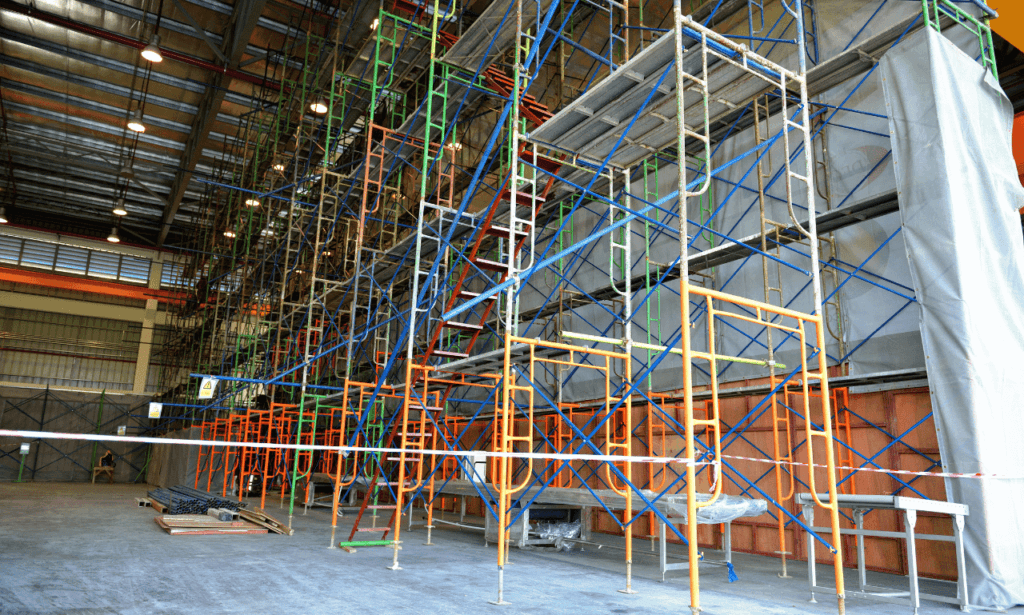
When it comes to complex scaffolding projects, ensuring clear scope confirmation is crucial. That’s where Augmented Reality (AR) comes in. With its advanced capabilities, AR provides a 3D visualization of the scaffold design, allowing stakeholders to have a better understanding of the project requirements and expectations.
By leveraging 3D visualization for scaffolding projects, AR technology creates a realistic representation of the scaffold structure. This enables stakeholders to confirm job requirements with confidence and even impress customers with interactive presentations. With AR, they can visually walk crews through the plan on the job site, ensuring that everyone is on the same page before the work begins.
The integration of AR technology in scaffolding projects revolutionizes how scope confirmation takes place. Instead of relying solely on blueprints and 2D drawings, AR offers a more immersive and intuitive experience. Stakeholders can explore the scaffold design from different angles and understand its spatial relationship in a 3D environment.
The use of AR for scope confirmation brings multiple benefits to scaffolding projects. It eliminates misunderstandings and reduces the risk of errors caused by miscommunication. With a realistic and detailed representation of the scaffold structure, stakeholders can spot potential issues and make necessary adjustments before construction begins. This proactive approach saves time, avoids costly rework, and improves overall project efficiency.
Let’s take a closer look at the advantages of clearer scope confirmation with AR:
- Enhanced stakeholder communication through interactive 3D visualizations
- Improved understanding of project requirements and expectations
- Real-time identification of potential issues and adjustments
- Reduction of errors caused by miscommunication or misinterpretation
- Streamlined project planning and increased efficiency
AR technology empowers stakeholders to have a comprehensive understanding of the scaffold design, allowing for confident decision-making and smoother project execution. It reinforces collaboration among all parties involved, from architects and contractors to project owners and inspectors.
With AR, scope confirmation becomes not only clearer but also more engaging and interactive. It bridges the gap between imagination and reality, enabling stakeholders to visualize the scaffold structure in a way that was once only possible in their minds.
In the next section, we’ll explore how AR technology can further improve safety at construction sites. Stay tuned!
Safety at the Site with AR

Augmented Reality (AR) technology is a game-changer when it comes to improving safety at construction sites and ensuring scaffolding safety. AR provides construction workers with real-time monitoring and inspection capabilities, allowing for quick identification of mistakes in scaffold designs before work begins. By overlaying virtual elements onto the scaffold structure, AR enhances safety planning and helps prevent accidents by providing timely feedback and ensuring proper scaffold setup.
One of the key advantages of AR in construction projects is its ability to assist in error detection and hazard prevention. By leveraging AR technology, construction workers can visualize and identify potential safety risks on-site. This enables them to take immediate action to address any deficiencies before accidents occur. By improving safety in construction projects, AR helps protect workers and prevent costly delays and accidents.
AR also plays a crucial role in ensuring compliance with safety regulations. By providing real-time monitoring and inspection capabilities, AR technology helps construction workers ensure that scaffolding structures meet safety standards. The ability to overlay virtual information onto the scaffold structure allows for accurate and efficient inspection, minimizing the risk of human error.
Furthermore, the implementation of AR technology in construction projects enhances safety planning. AR can be used to simulate different scenarios and assess potential risks. This allows construction managers to identify safety hazards and develop appropriate safety procedures and protocols. By integrating AR into safety planning, construction projects can better mitigate risks and improve overall safety performance.
The use of AR in scaffolding safety is a significant step forward in improving safety on construction sites. By leveraging AR technology, construction workers can proactively identify and address safety risks, ensure compliance with regulations, and enhance safety planning and inspections. The integration of AR into construction projects demonstrates a commitment to improving safety standards and protecting the well-being of workers in the construction industry.
Safety Benefits of AR in Construction
- Real-time monitoring and inspection capabilities
- Error detection and hazard prevention
- Compliance with safety regulations
- Accurate and efficient inspection
- Enhanced safety planning
Case Study: AR Implementation at XYZ Construction
| Key Findings | Results |
|---|---|
| Reduced safety incidents | 30% decrease in accidents on-site |
| Improved inspection efficiency | 50% reduction in inspection time |
| Enhanced compliance with safety regulations | 100% adherence to safety standards |
| Increased worker confidence | 90% of workers reported feeling safer |
Mobile Designs with AR
AR technology has revolutionized the way designers and stakeholders interact with scaffold designs. With the advancement of AR, viewing and sharing scaffold models on mobile devices has become easier than ever.
Designers can now bring their scaffold designs to client and crew meetings, providing a dynamic and immersive experience. With AR technology, they can view and review scaffold models on the go, enabling real-time collaboration and decision-making.
One of the key advantages of AR is its seamless integration across different devices. Scaffold models created on desktop platforms can be easily transferred and viewed on mobile devices using AR. This empowers designers to have their scaffold designs readily available, right at their fingertips, whenever and wherever they need them.
By using AR technology for mobile designs, stakeholders in scaffold projects can conveniently access and share designs with one another. This streamlines communication and improves understanding among team members, leading to more efficient and effective project execution.
Furthermore, AR enhances the visualization and comprehension of scaffold models on mobile devices. Stakeholders can interact with the virtual scaffold structure, zooming in to examine details, rotating it to view from different angles, and even overlaying it onto the actual construction site for better context. This immersive experience enables stakeholders to gain a deeper understanding of the scaffold design, fostering clearer communication and reducing the likelihood of misunderstandings.
Ultimately, AR technology empowers designers and stakeholders to embrace a more mobile and collaborative approach in scaffold projects. By leveraging AR for mobile designs, they can efficiently view, share, and interact with scaffold models, elevating the overall project experience and streamlining the construction process.
Benefits of AR for Mobile Designs
Here are some key benefits of using AR technology for mobile designs in scaffold projects:
- Convenience: AR enables easy viewing and sharing of scaffold designs on mobile devices, making them accessible anytime, anywhere.
- Real-time Collaboration: AR allows for instant collaboration and decision-making, as stakeholders can view and review scaffold models in real-time during meetings.
- Seamless Integration: AR seamlessly integrates scaffold models from desktop to mobile devices, ensuring designers have their designs readily available on the go.
- Enhanced Visualization: AR provides an immersive and interactive experience, allowing stakeholders to examine scaffold models in detail and overlay them onto the construction site for better context.
- Improved Communication: AR technology fosters clearer communication and reduces misunderstandings by enabling stakeholders to have a deeper understanding of the scaffold design.
| Benefits | Description |
|---|---|
| Convenience | AR enables easy viewing and sharing of scaffold designs on mobile devices, making them accessible anytime, anywhere. |
| Real-time Collaboration | AR allows for instant collaboration and decision-making, as stakeholders can view and review scaffold models in real-time during meetings. |
| Seamless Integration | AR seamlessly integrates scaffold models from desktop to mobile devices, ensuring designers have their designs readily available on the go. |
| Enhanced Visualization | AR provides an immersive and interactive experience, allowing stakeholders to examine scaffold models in detail and overlay them onto the construction site for better context. |
| Improved Communication | AR technology fosters clearer communication and reduces misunderstandings by enabling stakeholders to have a deeper understanding of the scaffold design. |
Faster and Easier Handovers with AR
When it comes to scaffold projects, efficient handovers are crucial for seamless transitions and successful outcomes. This is where Augmented Reality (AR) technology shines, providing a game-changing solution for faster and easier handovers.
With AR, it is now possible to record virtual walkthroughs of scaffold models, offering a guided tour of the scaffold plan to clients, crews, and suppliers. This innovative approach allows for efficient communication and a better understanding of the scaffold design, minimizing delays and misunderstandings during handovers.
By leveraging AR technology, project stakeholders can visualize the scaffold model in a virtual environment, exploring every aspect of the design before it is constructed. This virtual walkthrough not only provides a realistic representation of the scaffold structure but also enables effective collaboration and decision-making.
Imagine being able to showcase the scaffold plan to clients, walking them through the project virtually and addressing any questions or concerns they may have. This not only instills confidence in the design but also helps in gaining client approval faster.
For construction crews, AR-enabled handovers ensure that they have a clear understanding of the scaffold structure and its intricacies. This minimizes errors during assembly and enhances safety at the worksite. Crew members can refer to the virtual walkthrough for a comprehensive overview of the scaffold model, ensuring accurate and efficient setup.
Suppliers involved in the project can also benefit from AR handovers. They can now visualize the scaffold design, identify the necessary materials, and ensure that they are delivering the right components at the right time. This streamlines the supply chain process and reduces the risk of delays and rework.
Ultimately, AR technology revolutionizes the handover process in scaffold projects. It facilitates effective communication, enhances collaboration, and improves project efficiency. Faster and easier handovers lead to smoother transitions, fewer delays, and increased client satisfaction.
| Benefits of AR for Handovers | Examples |
|---|---|
| Efficient communication and understanding of scaffold design | Virtual walkthroughs providing a guided tour of the scaffold plan |
| Minimized delays and misunderstandings during handovers | Clear visualization of the scaffold structure in a virtual environment |
| Improved collaboration and decision-making | Instilling client confidence and gaining approval faster |
| Enhanced safety and accuracy during scaffold assembly | Comprehensive overview of the scaffold model for construction crews |
| Streamlined supply chain process for suppliers | Visualizing the scaffold design to ensure accurate material delivery |
Seamless System Integration with AR
AR technology seamlessly integrates with scaffold design software, offering a comprehensive visualization platform for scaffold models. One such software is Avontus Viewer, which eliminates the need for additional visualization tools. Avontus Viewer provides an efficient and convenient way to share scaffold designs and engage stakeholders in the project.
With AR integration, Avontus Viewer allows for in-app video sharing of scaffold virtual walkthroughs. This feature becomes valuable in marketing and client presentations, where stakeholders can have an immersive experience and gain a comprehensive understanding of the scaffold design.
Avontus Viewer Features
Avontus Viewer offers a range of features that enhance scaffold visualization and streamline the design process:
- t
- Realistic representation: Avontus Viewer provides a realistic and immersive environment for visualizing scaffold models. Stakeholders can experience the scaffold structure as if it were already constructed, enabling them to make informed decisions and identify any potential issues.
t
- Efficient collaboration: The integration of AR technology in Avontus Viewer facilitates seamless collaboration among team members and stakeholders. It allows for real-time feedback and communication, reducing delays and enhancing productivity.
t
- On-site guidance: Avontus Viewer’s AR capabilities extend beyond the design phase. It offers on-site guidance by overlaying scaffold models on the actual construction site, helping workers accurately set up scaffolding components and reducing errors.
Benefits of AR Integration with Scaffold Design Software
The integration of AR technology with scaffold design software like Avontus Viewer brings several benefits to construction projects:
tttttttttttttttttttttttttttttt
| Benefit | Description |
|---|---|
| Enhanced visualization | AR integration provides a more immersive and interactive visualization experience, allowing stakeholders to better understand and review scaffold designs. |
| Improved communication | By using Avontus Viewer’s AR features, construction teams can communicate design intent and project requirements more effectively, reducing misunderstandings and enhancing collaboration. |
| Streamlined workflow | The seamless integration of AR technology enables a smoother workflow, eliminating the need for separate visualization tools and enhancing efficiency in scaffold design and management. |
| Accurate planning and execution | AR integration with scaffold design software allows for accurate planning and execution of scaffold projects, minimizing errors and ensuring compliance with safety and regulatory standards. |
With AR integration and powerful scaffold design software like Avontus Viewer, construction professionals can leverage the benefits of real-time visualization and collaboration, ultimately leading to more successful and efficient scaffold projects.
Conclusion
Augmented Reality (AR) technology has the potential to revolutionize scaffolding in construction projects. By enhancing safety, efficiency, and communication, AR transforms the way scaffold design, training, and operations are conducted. With real-time visualizations and overlays, AR improves accuracy and error detection, resulting in safer construction sites. Additionally, AR enables clearer scope confirmation, faster handovers, and seamless integration with scaffold design software like Avontus Viewer.
AR not only enhances the overall construction process but also contributes to the success of scaffolding projects. By embracing AR technology, construction professionals can take advantage of its numerous benefits and applications. From improving safety and streamlining scaffold design to providing immersive training environments, AR drives innovation and transforms the construction industry.
With the implementation of AR technology, the construction industry can harness the power of digitalization and take scaffolding to new heights. By embracing AR, construction professionals are paving the way for a safer, more efficient, and technologically advanced future in the field of scaffolding.
FAQ
What is the benefit of using AR in scaffolding?
AR in scaffolding enhances safety and efficiency by allowing real-time visualizations and overlays of virtual elements on the scaffold structure. It improves accuracy in checking the presence of tie rods, cross-bracing rods, and base plates, and assists in measuring inspection requirements and identifying deficiencies.
How is AR implemented for scaffolding safety?
Implementation of AR in scaffolding safety involves integrating deep learning models and AR models. Devices like Microsoft HoloLens and HoloLens2 provide spatial awareness, position tracking, and interaction capabilities. AR can recognize safety violations, track construction progress, detect and quantify cracks, and assist superintendents in visual inspections and safety planning.
What are the applications of AR in scaffold design?
AR can provide a virtual representation of the scaffold structure, allowing designers to visualize and manipulate the scaffold model in real-time. It helps in planning and optimizing the placement of scaffold components, identifying clashes and conflicts, and improving communication and collaboration among stakeholders.
How can AR enhance scaffolding training?
AR provides interactive and immersive training environments for scaffold setup, assembly, and safety procedures. It simulates real-world scenarios, familiarizes trainees with components, regulations, and safety protocols, and offers real-time guidance, feedback, and performance assessment.
How does AR contribute to clearer scope confirmation in scaffolding projects?
AR allows for 3D visualization of scaffold designs, helping stakeholders understand project requirements and expectations. It provides a realistic representation of the scaffold structure, enabling stakeholders to confirm job requirements and facilitate better communication and decision-making at the job site.
How does AR improve safety at the construction site?
AR helps in error detection, hazard prevention, and quick identification of design mistakes before construction starts. It provides real-time monitoring and inspection capabilities, ensures compliance with safety regulations, enhances safety planning, and provides timely feedback for proper scaffold setup.
How does AR enable mobile designs for scaffolding?
AR technology allows for easy viewing and sharing of scaffold designs on mobile devices. Scaffold models can be brought to client and crew meetings, ensuring everyone is on the same page. AR enables seamless integration of scaffold models from desktop to mobile devices, improving communication and collaboration.
How does AR make handovers in scaffold projects faster and easier?
AR allows for the recording of virtual walkthroughs of scaffold models, providing guided tours of the scaffold plan to clients, crews, and suppliers. It facilitates efficient communication, minimizes delays and misunderstandings during handovers, and ensures smooth transitions in scaffold projects.
How does AR integrate with scaffold design software?
AR technology seamlessly integrates with scaffold design software like Avontus Viewer. This eliminates the need for additional visualization tools and provides a comprehensive platform for scaffold models. Avontus Viewer enables in-app video sharing of scaffold virtual walkthroughs, aiding in marketing and client presentations.
What are the benefits of using AR in scaffolding?
AR technology enhances safety, efficiency, and communication in scaffold design, training, and operations. It provides real-time visualizations and overlays, improves accuracy and error detection, enables clearer scope confirmation, faster handovers, and seamless integration with scaffold design software.

Optimize Stock with Inventory Management Systems
Efficient inventory management is essential for businesses to track and control their stock effectively….
Best scaffold inspection apps for Safety Compliance
Enhance overall safety and quality with scaffold inspection apps that offer managed digital checklists…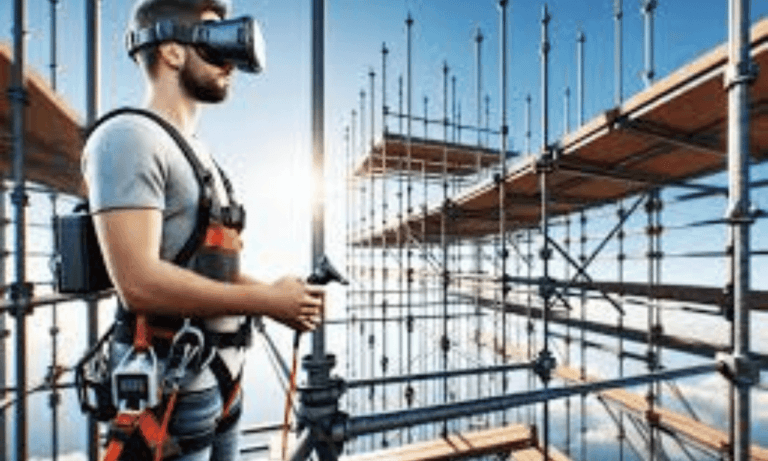
Improve Safety with Training VR Modules scaffolding
Virtual Reality (VR) has revolutionized the way we approach workplace safety training, particularly in…
Optimize Teams with Workforce Management Software
Workforce management software is revolutionizing the way businesses operate, helping to optimize team…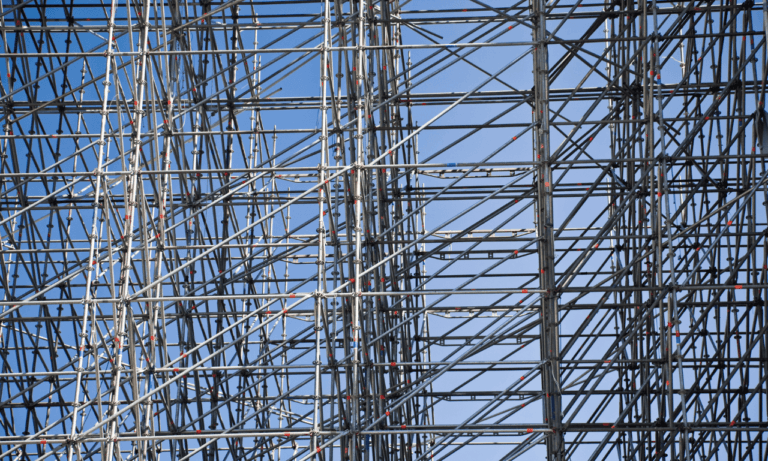
Best Compliance Software Solutions for scaffolding 2024
In the fast-paced world of scaffolding, compliance is crucial. Scaffolding companies must navigate a…
No posts found
